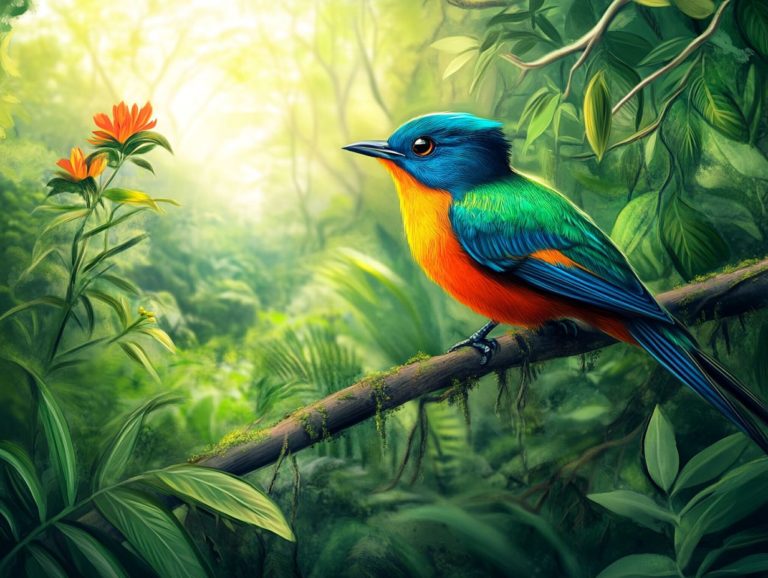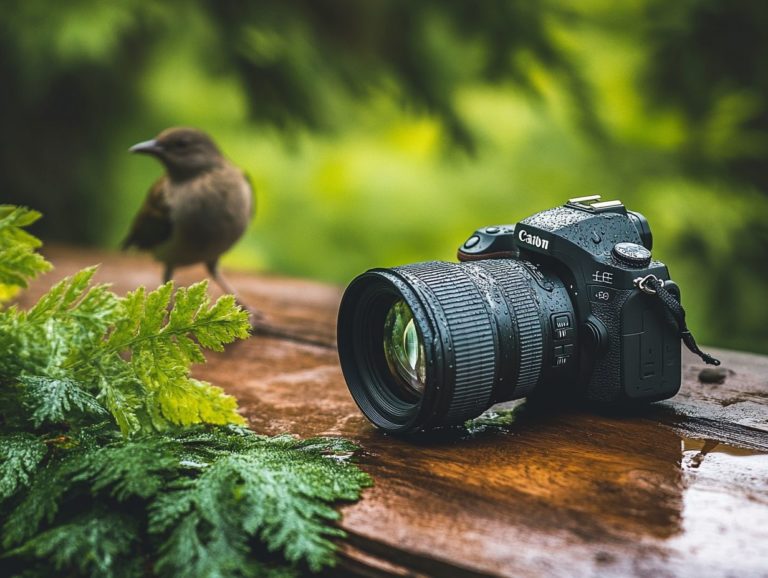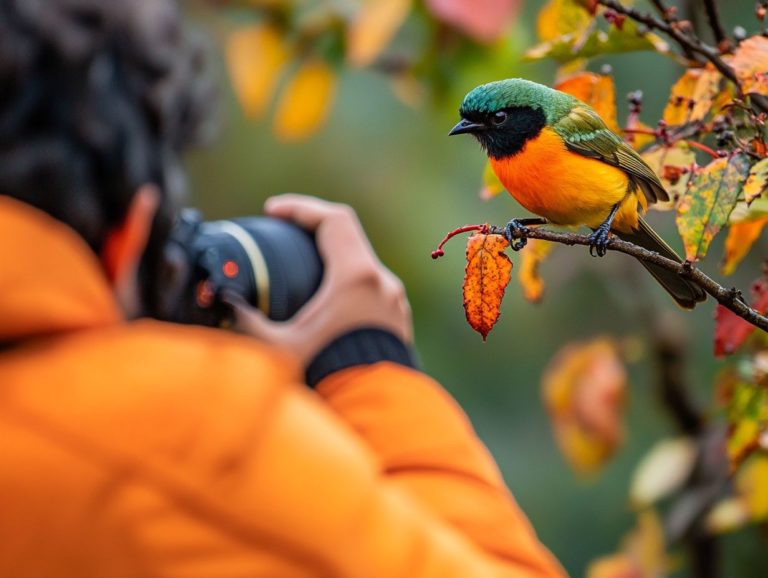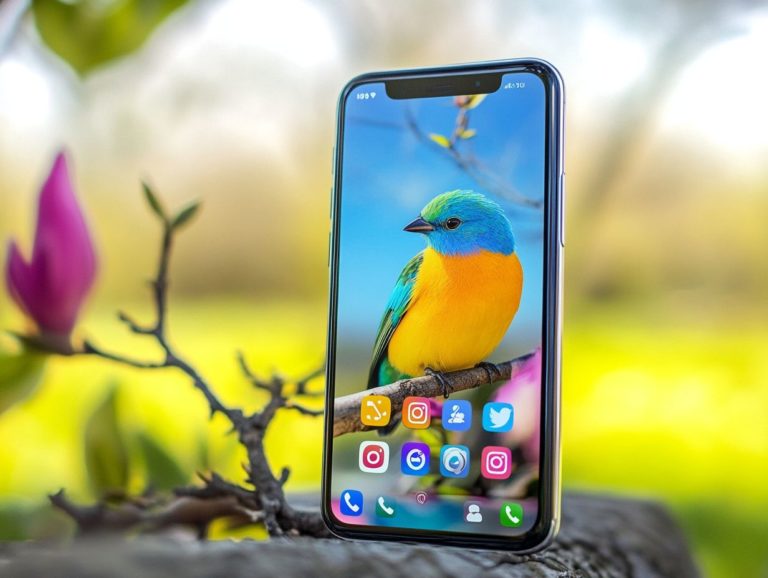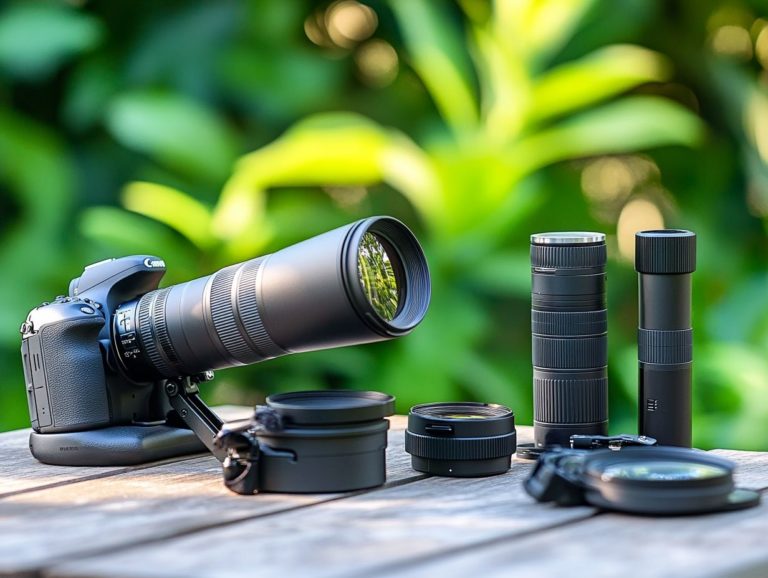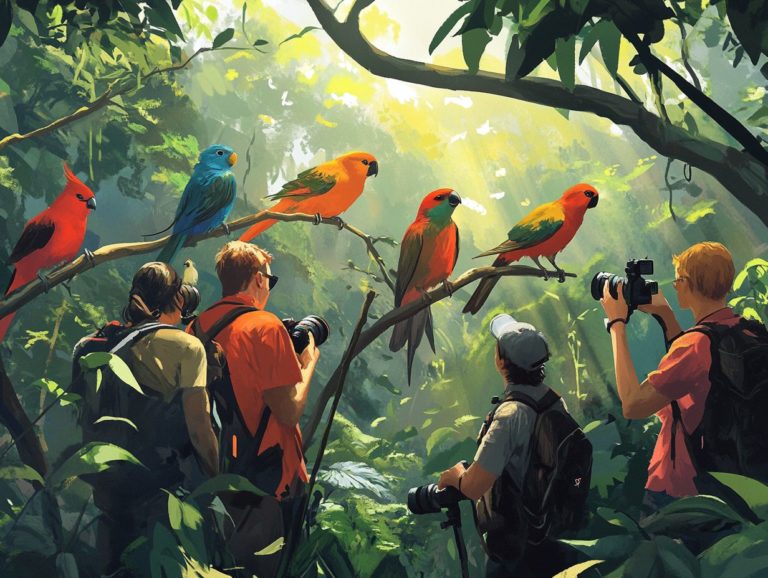The Basics of Bird Photography Composition
Bird photography is a thrilling art that demands patience, skill, and a sharp eye. The way you frame your subject can truly elevate your ability to capture stunning images.
This guide will walk you through the essentials of bird photography composition, highlighting its importance and exploring key elements such as lighting, background, and subject placement.
You ll discover the right equipment, camera settings, and practical tips that will elevate your bird photography to new heights.
Join in to unveil the secrets behind stunning bird imagery.
Contents
- Key Takeaways:
- Understanding Composition in Bird Photography
- Elements of a Strong Bird Photo
- Equipment and Settings for Bird Photography Composition
- Tips and Tricks for Composing Stunning Bird Photos
- Frequently Asked Questions
- What is bird photography composition?
- Why is composition important in bird photography?
- What are some basic elements of bird photography composition?
- How can I improve my bird photography composition?
- Ready to break the rules of composition and get creative in your bird photography?
- What are some common composition mistakes in bird photography?
Key Takeaways:
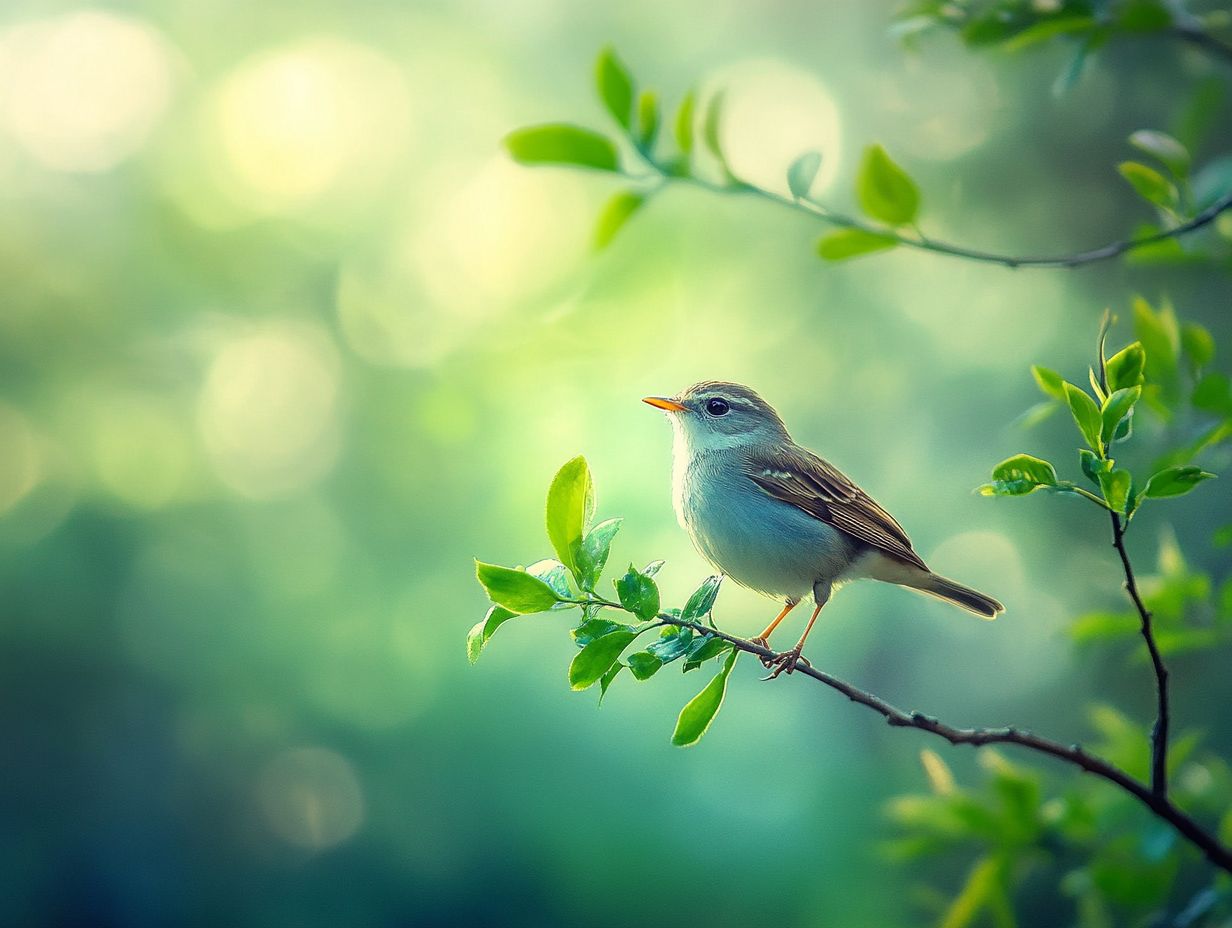
- Composition is key in bird photography and can make or break a photo.
- Lighting, subject placement, and perspective are important elements for a strong bird photo.
- Choosing the right equipment and camera settings, along with patience and experimentation, can lead to stunning bird images.
Understanding Composition in Bird Photography
Understanding composition in bird photography is crucial for capturing images that resonate with your audience. It s not just about how elements are arranged within the frame; it s also about the emotional connection that the subject conveys.
By mastering various photographic techniques and employing principles like the rule of thirds, you can achieve a dynamic simplicity in your work. Pay attention to the bird’s habitat, its behavior, and the shooting angle. This practice opens up more impactful photographic opportunities and ensures that your main subject stands out beautifully.
Defining Composition and its Importance
Composition in photography is all about how you arrange the visible parts within your frame. This arrangement is crucial for crafting powerful images that evoke emotions and narrate a story about your subject.
By strategically placing your subject according to established rules of composition like the rule of thirds or leading lines you can guide your viewer’s gaze and establish a sense of balance within your image. These principles enhance aesthetic appeal and resonate on a deeper emotional level, forging a connection between the viewer and the scene.
In bird photography, effective composition is even more important. The way you position the avian subject within its habitat can capture fleeting moments of behavior, highlight unique features, and emphasize the intricate relationship between the bird and its environment. This thoughtful approach transforms a simple photograph into a narrative that speaks volumes.
Elements of a Strong Bird Photo
Crafting striking bird images requires you to pay attention to several essential elements. Optimal lighting is crucial, as it sets the mood and highlights the details of your subject. Thoughtful background choices can either complement or distract from your subject, so selecting the right one is vital.
Strategic subject placement also enhances the impact of your photograph, focusing on the foreground and background elements that frame your subject.
Lighting and Background
The interplay of lighting and background is crucial in your bird photography, especially when showcasing portrait images of birds in their natural settings.
Understanding lighting is essential for stunning bird photography! The golden hour right after sunrise or just before sunset provides soft, warm light that enhances vibrant hues. In contrast, harsh midday sunlight can cast stark shadows and create overly bright highlights, complicating your attempt to capture delicate details.
Selecting the right background is equally important; a carefully chosen backdrop can provide the contrast needed to make the bird stand out while accentuating its natural beauty. This thoughtful approach to composition fosters a dynamic simplicity, allowing the essence of the bird and its environment to shine without unnecessary distractions.
Subject Placement and Perspective
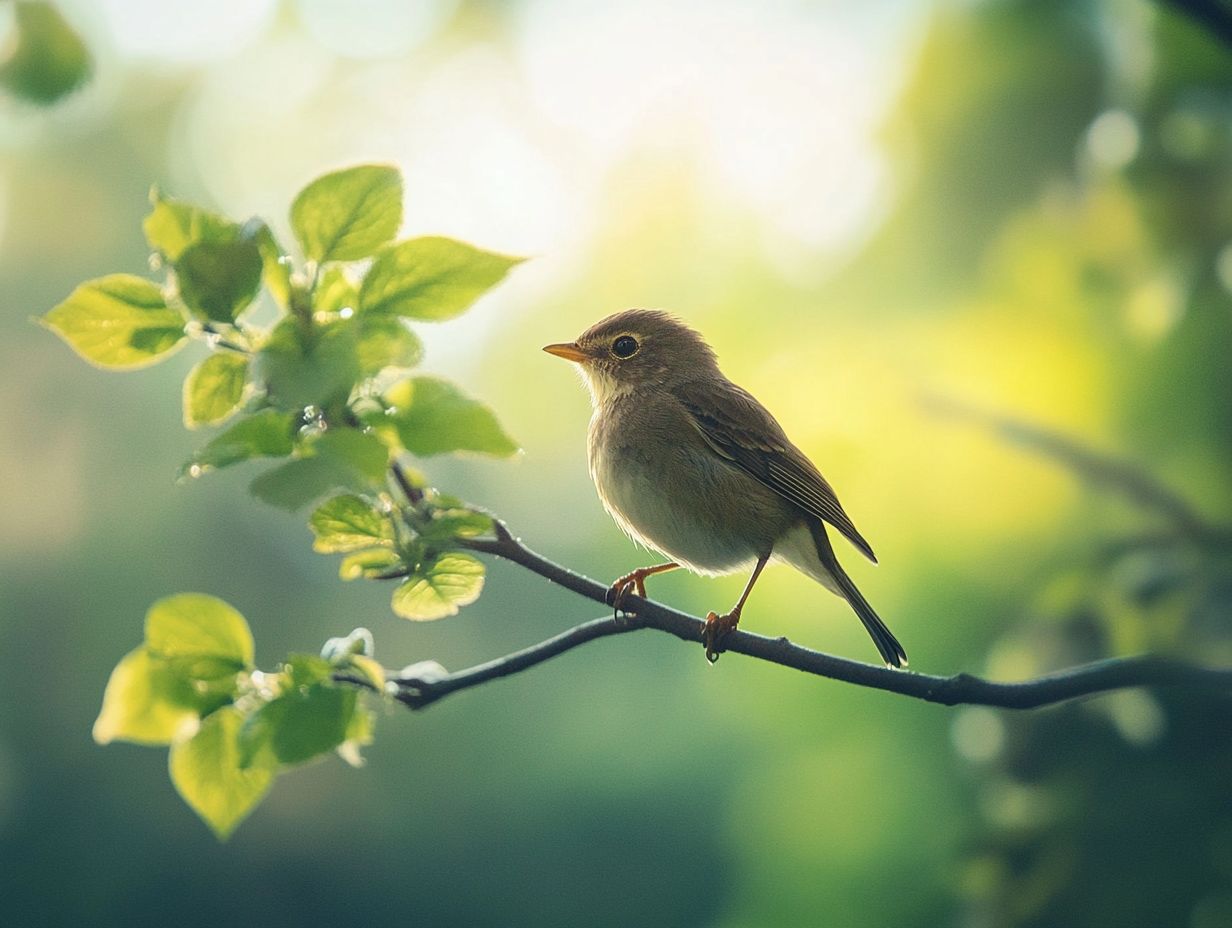
Effective subject placement and perspective are essential in bird photography. They guide the viewer’s eye and create a balanced composition that highlights the main subject.
To improve your photos, consider employing techniques like negative space (leaving empty areas around your subject) and varying angles of view. By deliberately leaving empty areas around your avian subject, you can evoke feelings of isolation or freedom, enhancing the emotional impact of your photograph.
Experimenting with different perspectives such as shooting from a low angle to emphasize the bird s stature or capturing it in flight from above can significantly transform the story you re telling. Each angle provides a unique glimpse into the bird’s world, turning an ordinary shot into something truly extraordinary.
Rule of Thirds and Other Techniques
The rule of thirds is an essential technique in photography that encourages you to create balanced and dynamic compositions by dividing your frame into three equal parts. This method suggests that positioning key elements along these lines or at their intersections can draw the viewer’s eye into the frame more effectively.
For example, when capturing birds in their natural habitats, placing your subject just off-center along one of these lines can highlight the surrounding environment and make your image more engaging. Incorporating other compositional techniques, like leading lines or framing, can further enhance the simplicity and dynamics of your work.
By integrating elements such as branches or pathways, you can expertly guide the viewer s gaze toward the bird, crafting a more compelling narrative within your photograph.
Equipment and Settings for Bird Photography Composition
Selecting the right equipment and camera settings is essential for achieving optimal composition in bird photography. This careful choice gives you the power to capture the beauty and emotions of birds as they inhabit diverse environments.
Choosing the Right Gear
When you embark on your bird photography journey, selecting the right gear is crucial; it can dramatically influence the quality of the images you capture across different environments.
Investing in a high-quality camera body with fast autofocus capabilities will ensure you never miss those fleeting moments when birds are in motion. A telephoto lens, ideally ranging from 300mm to 600mm, is essential for achieving the reach necessary to photograph birds from a distance without causing any disturbance.
Incorporating a sturdy tripod will stabilize your camera, especially in low-light conditions or windy weather, allowing for sharp, detailed shots. Understanding how these tools work together will give you the power to adapt to diverse habitats, whether you’re navigating dense forests or open wetlands, thus enhancing your chances of capturing stunning, dynamic images of avian life.
Camera Settings for Optimal Composition
Quickly master your camera settings like ISO (the measure of your camera’s sensitivity to light), aperture, and shutter speed for achieving optimal composition in bird photography. This knowledge gives you the power to adapt to changing light conditions and capture breathtaking images!
When you understand how each of these settings interacts, you gain effective control over the brightness and clarity of your shots. Exposure becomes your ally; a higher ISO might be necessary in low light, while a wider aperture can beautifully isolate your subject, creating a sharp focus against a softly blurred background.
Adjusting shutter speed allows you to freeze a bird in motion, showcasing the elegance and speed of these magnificent creatures. By balancing these elements, you not only elevate the visual appeal of your images but also ensure they tell a captivating story, drawing viewers deep into the wonders of nature.
Tips and Tricks for Composing Stunning Bird Photos
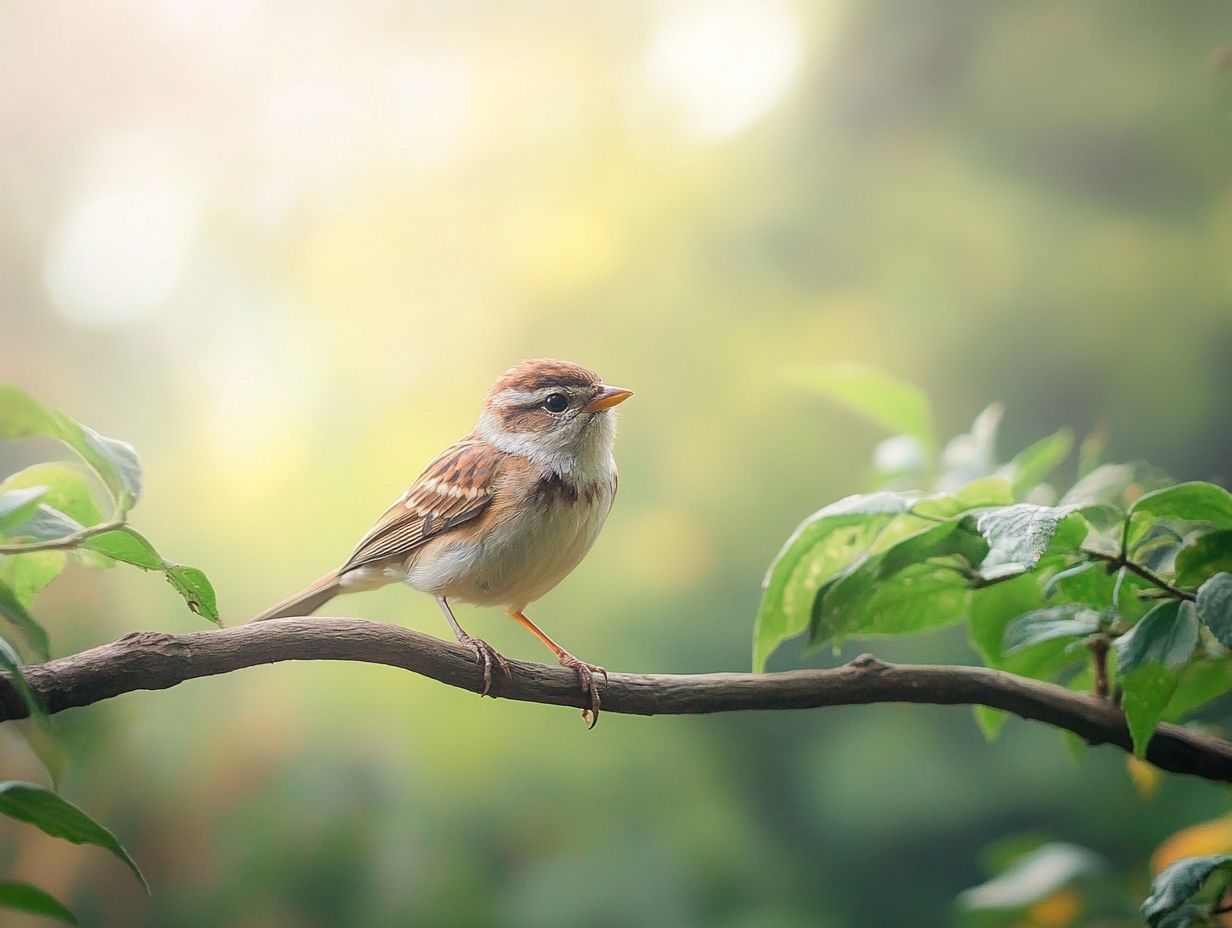
Creating stunning bird photographs demands a harmonious blend of insightful tips and techniques, along with the patience and persistence necessary to capture those fleeting moments that result in breathtaking images.
Patience and Persistence
Patience and persistence are essential qualities for any bird photographer. Waiting for that perfect moment can unlock great photo moments.
As a birdwatcher, you know that capturing these fleeting moments requires not only technical skill but also a sense of calm and attentiveness. The tranquility of nature deepens your connection with the environment, leading to remarkable encounters with avian life.
Try strategies like practicing mindfulness or journaling to keep your mind active while you wait! Using tools like field guides or species-identifying apps can enhance your experience, transforming idle time into an enlightening adventure.
By cultivating patience, you not only enhance your chances of capturing stunning images but also savor the serene beauty that surrounds you. This makes each photograph a reflection of nature’s shapes and colors.
Utilizing Natural Elements
Incorporating natural elements in your environment, such as the foreground and background, can significantly elevate the composition of your bird photos. Doing so creates a more immersive experience for your viewers.
Thoughtfully adding features like vibrant plants and reflective water bodies can frame stunning images that truly engage your audience. For instance, positioning a colorful bush in the foreground adds depth, while a serene pond mirrors the subtle hues of the sky, crafting a harmonious backdrop. Water, in particular, attracts various bird species and enhances your scene with its tranquil presence, creating a perfect bird habitat.
Observing how these natural elements interact can spark your creativity, allowing you to weave captivating stories through your photography.
Experimenting with Different Angles
Experimenting with different angles and perspectives can profoundly enhance the way you depict birds in your photographs, resulting in images that are both dynamic and engaging.
Capturing subjects from low angles highlights their stature and creates an impressive sense of grandeur. Wider-angle images unveil intricate details of plumage and natural behaviors that might otherwise slip under the radar. This variety not only elevates your visual storytelling but also fosters a deeper connection between you and the avian subjects.
By employing techniques like eye-level shots or top-down views, along with close-up images, you can transform ordinary scenes into captivating narratives. This showcases the beauty and personality of the birds in a way that truly resonates with your audience.
Frequently Asked Questions
What is bird photography composition?
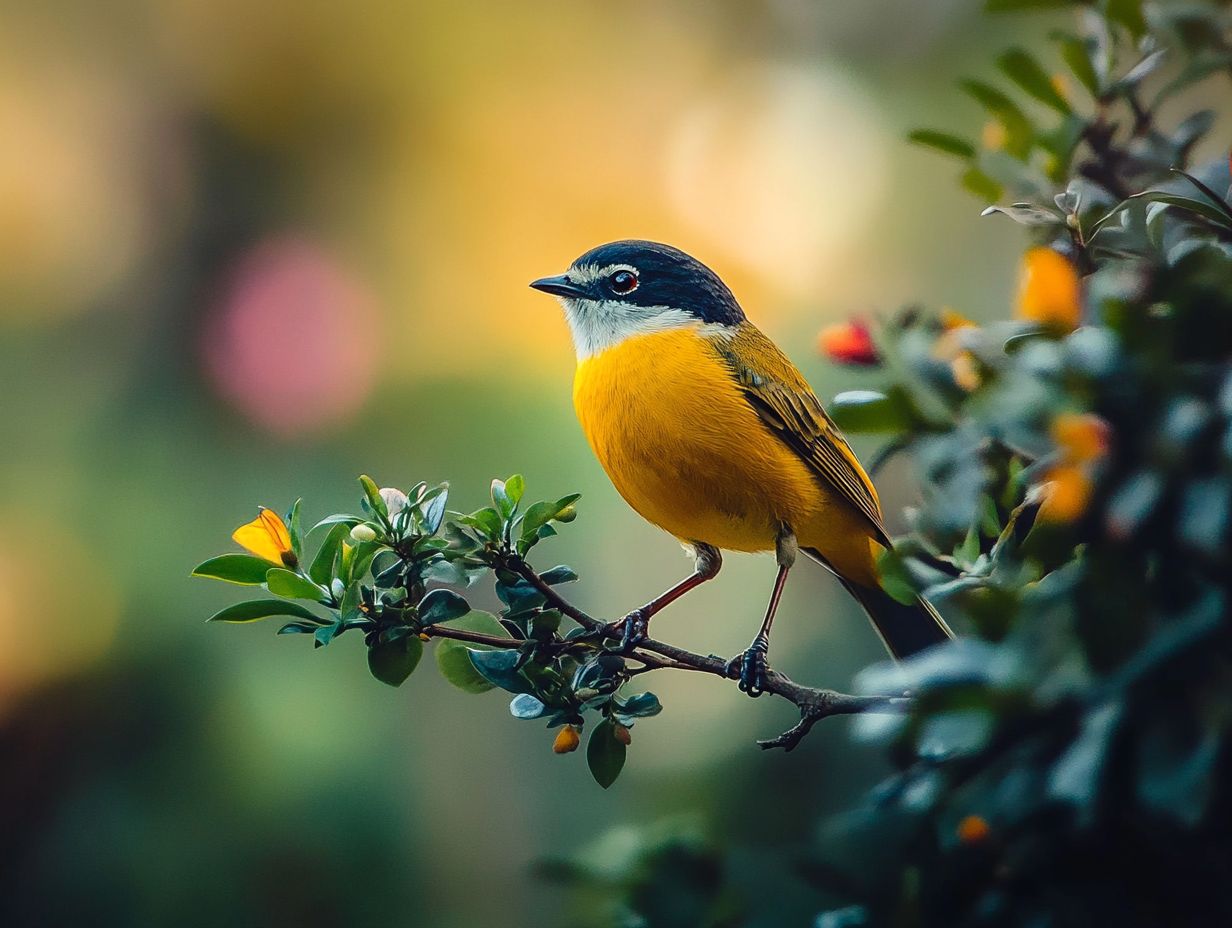
Bird photography composition involves arranging and placing elements in a photograph to create a visually appealing and balanced image of a bird.
Why is composition important in bird photography?
Composition is crucial in bird photography as it can make or break a photograph. A well-composed photo can tell a story, evoke emotions, and capture the beauty of birds in their natural habitat. For those looking to enhance their skills, exploring tips for photographing rare bird species can be incredibly beneficial.
What are some basic elements of bird photography composition?
The basic elements of bird photography composition include framing, the rule of thirds, leading lines, balance, and negative space. Understanding these elements, along with exposure for bird photography, helps convey birds’ emotions and create interest, guiding the viewer’s eye to the subject.
How can I improve my bird photography composition?
To improve your bird photography composition, experiment with different angles, bird characterization, and focal lengths. It’s also helpful to study and observe the composition techniques used in professional bird photographs.
Ready to break the rules of composition and get creative in your bird photography?
While it s important to understand the basics of composition, rules can be broken in bird photography, especially when capturing the landscape and the surrounding birdwatching environment. Sometimes, breaking the rules can lead to a unique and creative composition. However, it s essential to know when and how to break the rules effectively.
What are some common composition mistakes in bird photography?
Are you capturing stunning bird photos or missing the mark? Many bird photographers focus too much on the bird and forget about the background. This leads to cluttered images that can obscure important details.
Many photographers also forget to leave enough empty space around the bird. This can make photos feel cramped and unbalanced. Avoid these common mistakes to ensure your bird photos stand out!

